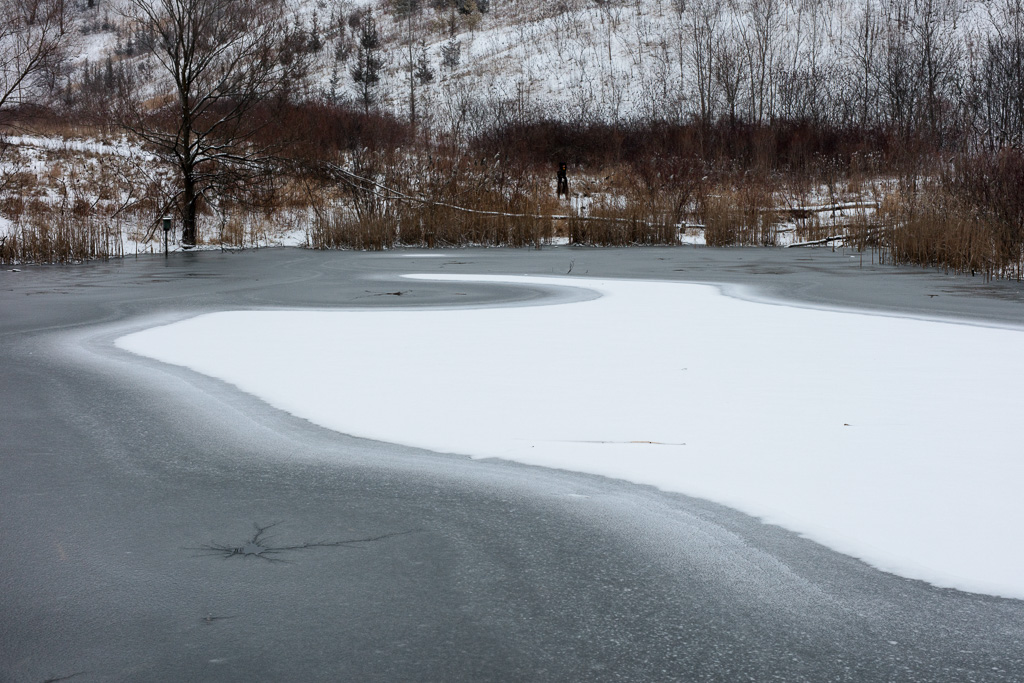A light dusting of snow settles over a pond as the surface water begins to congeal. This is the scene that greets me as I walk early in the season through Toronto’s Evergreen Brick Works. Where the water has frozen, the snow remains intact; where the water is still more liquid than ice, the snow melts. The result is an abstract form that floats on the middle of the pond.
This image speaks to me of the liminal space that marks the transition between two different states. Liquid and solid. Autumn and winter. Warm and cold. When can we say the transition has happened? When can we say of a stretch of water that it is now definitively ice?
The space figured here speaks of the liminal space that marks larger transitions, too. Once, this was the site of a quarry (the Toronto Brick Works) that descended deep below grade. It was an industrial space with kilns that fired the bricks which still can be found in many of the city’s older buildings. More lately, it has become the site of a reclamation project aimed at returning the quarry to wetlands, creating a green space in the heart of the city. Is there a clear line we can draw between the industrial and the natural?
Extrapolating further, we can imagine this scene as emblematic of more global concerns. For example, what are we to make of that liminal space between whatever the world was before humans arrived on the scene and this state of affairs we have come to call the Anthropocene? Although experts tend to agree that the term, Anthropocene, is warranted, they disagree about when it “officially” began. Some say it began as soon as humans stopped living as nomads and settled into agrarian communities. Others say it began with the invention of nuclear weapons.
My personal take on the matter is that it makes no sense to draw a clear line. It is in our nature to occupy liminal spaces. We don’t want to live wholly in one state or another. We are neither the before nor the after. We are all about the transition.
